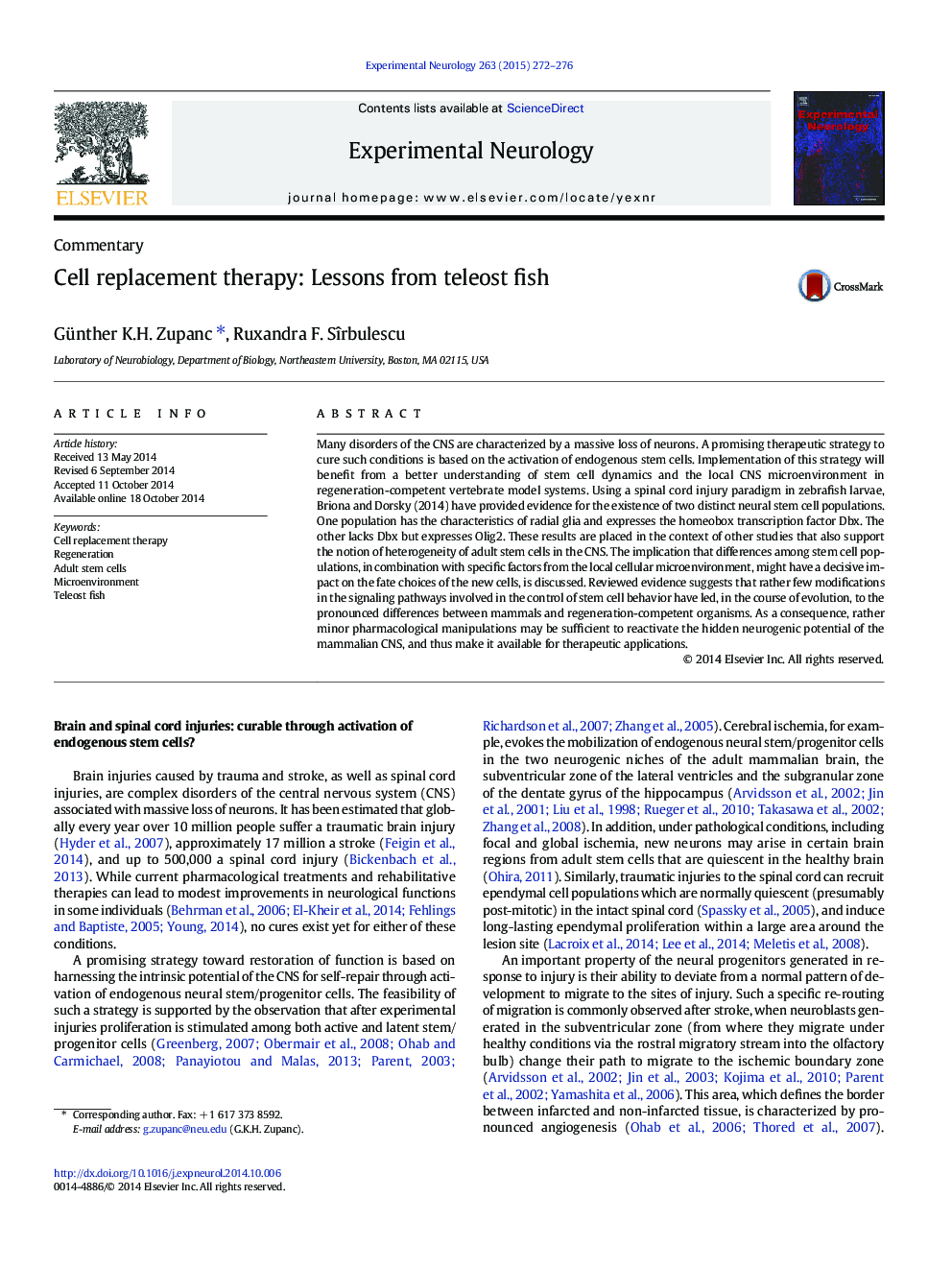| کد مقاله | کد نشریه | سال انتشار | مقاله انگلیسی | نسخه تمام متن |
|---|---|---|---|---|
| 6017485 | 1580170 | 2015 | 5 صفحه PDF | دانلود رایگان |

Many disorders of the CNS are characterized by a massive loss of neurons. A promising therapeutic strategy to cure such conditions is based on the activation of endogenous stem cells. Implementation of this strategy will benefit from a better understanding of stem cell dynamics and the local CNS microenvironment in regeneration-competent vertebrate model systems. Using a spinal cord injury paradigm in zebrafish larvae, Briona and Dorsky (2014) have provided evidence for the existence of two distinct neural stem cell populations. One population has the characteristics of radial glia and expresses the homeobox transcription factor Dbx. The other lacks Dbx but expresses Olig2. These results are placed in the context of other studies that also support the notion of heterogeneity of adult stem cells in the CNS. The implication that differences among stem cell populations, in combination with specific factors from the local cellular microenvironment, might have a decisive impact on the fate choices of the new cells, is discussed. Reviewed evidence suggests that rather few modifications in the signaling pathways involved in the control of stem cell behavior have led, in the course of evolution, to the pronounced differences between mammals and regeneration-competent organisms. As a consequence, rather minor pharmacological manipulations may be sufficient to reactivate the hidden neurogenic potential of the mammalian CNS, and thus make it available for therapeutic applications.
Journal: Experimental Neurology - Volume 263, January 2015, Pages 272-276